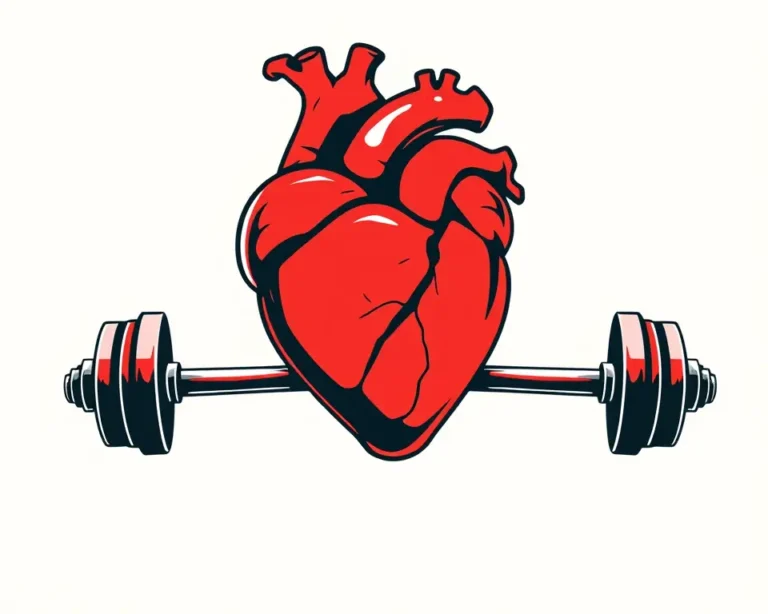Bob Harper, renowned fitness expert and star of The Traitors, is revealing how his experience on the show has dramatically reshaped his approach to fitness after his near-fatal heart attack in 2017. The former Biggest Loser trainer, who suffered a “widowmaker” heart attack nearly eight years ago, had adopted a cautious workout routine, primarily centered around yoga, out of fear of overexerting his heart. However, a demanding physical challenge on The Traitors Season 3 forced him to confront his limitations and ultimately led to a revitalized and more challenging fitness regimen.
A Health Scare Spurs Change
In February 2017, at the age of 51, Bob Harper experienced a cardiac arrest during a workout. Fortunately, two doctors present at the gym administered CPR, and he was revived using an automated external defibrillator (AED). Harper was later placed in a medically induced coma to allow his heart to recover. This life-altering event served as a major wake-up call, prompting him to re-evaluate his lifestyle and fitness habits.
Following his recovery, Harper transitioned to a less rigorous workout routine, primarily focusing on yoga. He admitted to being hesitant to push himself too hard, fearing another heart attack. In an interview, Harper stated, “Since my heart attack, I completely changed the way I work out. And for years all I’ve done is yoga.”
The Mental Toll of Recovery
Harper has also spoken openly about the mental challenges he faced after his heart attack. He described experiencing anxiety about returning to the gym, feeling self-conscious about being “the guy that had the heart attack in that gym.” This highlights the often-overlooked psychological impact of cardiac events and the importance of addressing both the physical and emotional aspects of recovery.
‘The Traitors’ Challenge: A Turning Point
Harper’s appearance on The Traitors Season 3 proved to be a pivotal moment in his fitness journey. During the fourth episode, he and his fellow contestants faced a particularly grueling physical challenge involving carrying a heavy object. This task pushed Harper to his limits and forced him to trust his heart again.
Overcoming Fear and Embracing New Challenges
Reflecting on the experience, Harper explained, “That day really f*cked me up. And I’ll tell you, since my heart attack, I completely changed the way I work out… I didn’t want to push it for fear of another heart attack. But that day was a turning point.”
Since then, Harper has incorporated more challenging exercises into his routine, which he says “feels really good”. He acknowledged that for a long time, he “didn’t trust my heart anymore,” but The Traitors experience helped him overcome that fear and embrace a more demanding fitness regime.
A Renewed Approach to Fitness
Harper’s journey highlights the importance of adapting one’s fitness routine after a major health event. While he initially scaled back his workouts after his heart attack, he eventually found a way to incorporate more challenging activities while still prioritizing his health.
Prioritizing a Balanced Approach
In the years following his heart attack, Harper has emphasized a balanced approach to fitness and wellness. He incorporated practices like transcendental meditation and focused on living in the moment. He also made significant changes to his diet.
Dietary Shifts
Following his heart attack, Harper adopted a Mediterranean diet, as recommended by his doctors. He also began paying closer attention to his macronutrient intake, focusing on protein, fats, and carbohydrates. He tends to stay low-fat and avoids red meat.
Embracing Carbs
Harper has also spoken about embracing carbohydrates, which he had previously restricted in his diet. This shift reflects a growing understanding of the importance of carbohydrates for energy and overall health, especially for those engaging in physical activity.
Lessons Learned and Shared
Bob Harper’s experience offers valuable insights for anyone recovering from a cardiac event or seeking to improve their overall health and fitness. His story underscores the importance of:
- Listening to your body: Harper emphasizes the need to be mindful of one’s physical limitations and to avoid pushing oneself too hard, especially after a health scare.
- Seeking professional guidance: Consulting with doctors and other healthcare professionals is crucial for developing a safe and effective workout plan.
- Addressing mental health: Recognizing and addressing the emotional challenges associated with recovery is essential for overall well-being.
- Finding joy in movement: Engaging in activities that are enjoyable and sustainable can help maintain motivation and adherence to a fitness routine.
- Trusting your heart: Overcoming the fear of re-injury or another cardiac event is a significant step in the recovery process.
A Message of Hope and Resilience
Harper’s journey is a testament to the power of resilience and the human spirit. His willingness to share his experiences has inspired countless individuals to take control of their health and well-being. By demonstrating that it is possible to recover from a major health event and return to an active and fulfilling life, Harper offers a message of hope and encouragement to others facing similar challenges.
Examples of Post-Heart Attack Workouts
While it’s important to consult with a doctor before starting any new exercise program after a heart attack, here are some general examples of workouts that may be suitable, inspired by Bob Harper’s journey:
- Yoga: Focus on gentle and restorative yoga styles to improve flexibility, balance, and relaxation.
- Cycling: Stationary cycling is a low-impact cardio activity that can help improve cardiovascular fitness.
- Walking: Regular brisk walking is a simple yet effective way to increase heart health.
- Circuit Training: Incorporate bodyweight exercises like squats, lunges, and push-ups (modified if needed) with short rest periods.
- Strength Training: Use light weights or resistance bands to build strength and muscle mass.
Adapting Exercises
It’s important to modify exercises as needed to accommodate individual limitations and fitness levels. Start slowly and gradually increase the intensity and duration of workouts over time.
The Importance of Monitoring
During exercise, it’s crucial to monitor heart rate and blood pressure, and to be aware of any symptoms such as chest pain, shortness of breath, or dizziness.
Bob Harper’s Enduring Influence
Bob Harper’s story continues to resonate with audiences worldwide. His openness about his health challenges, combined with his expertise in fitness and nutrition, has made him a trusted and influential figure in the wellness community. His experience on The Traitors has not only transformed his own workout routine but has also inspired others to embrace a more active and fulfilling lifestyle.
Harper’s journey serves as a powerful reminder that even after a major health setback, it is possible to regain strength, confidence, and a renewed sense of purpose. By sharing his story, he empowers others to prioritize their health, overcome their fears, and live life to the fullest.







